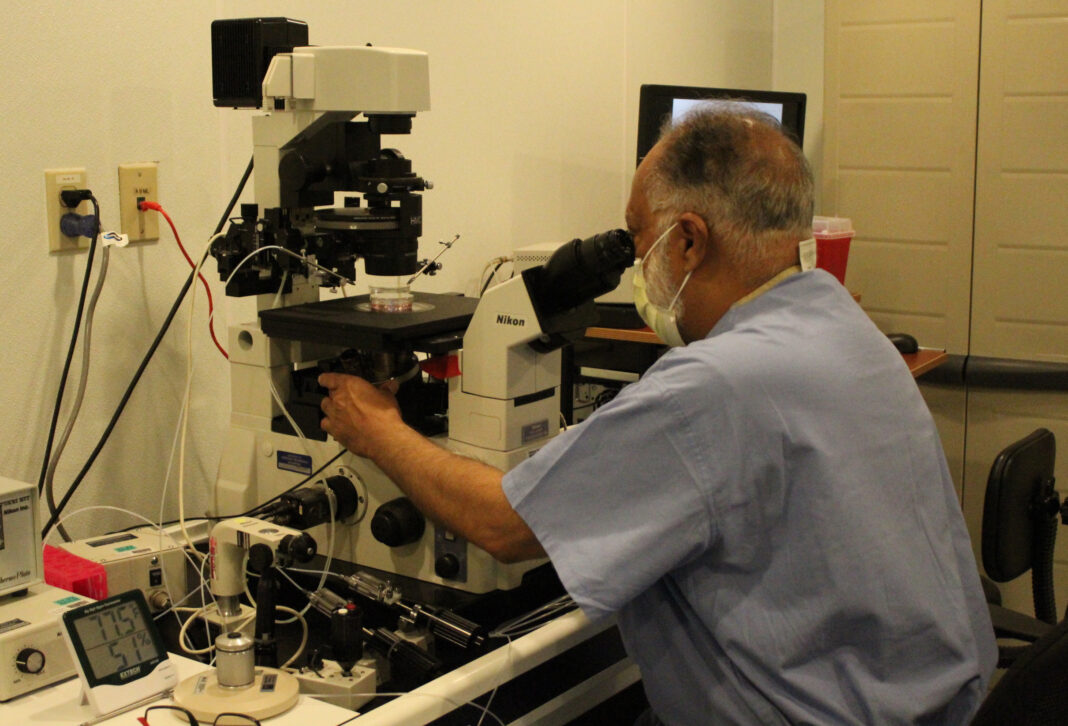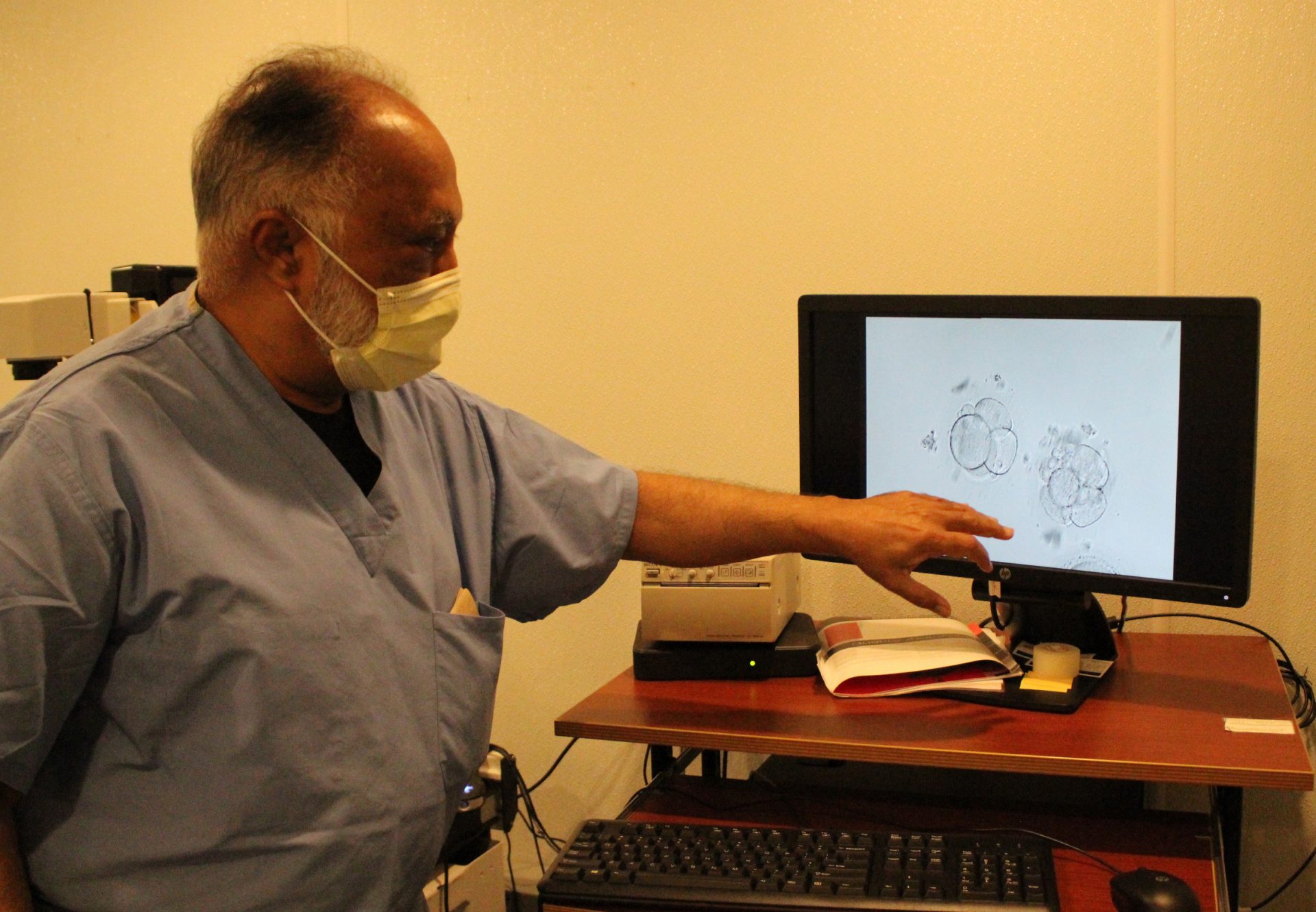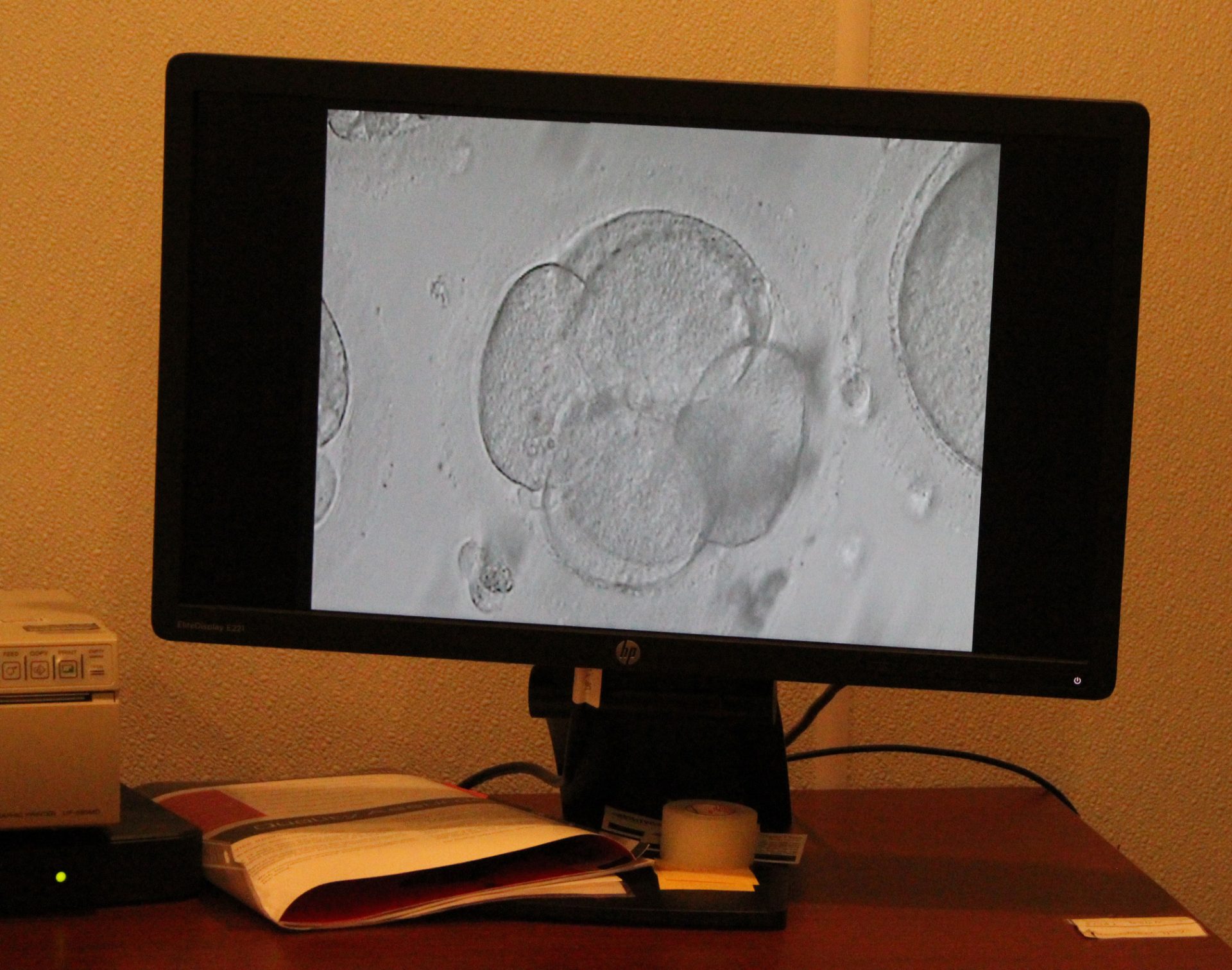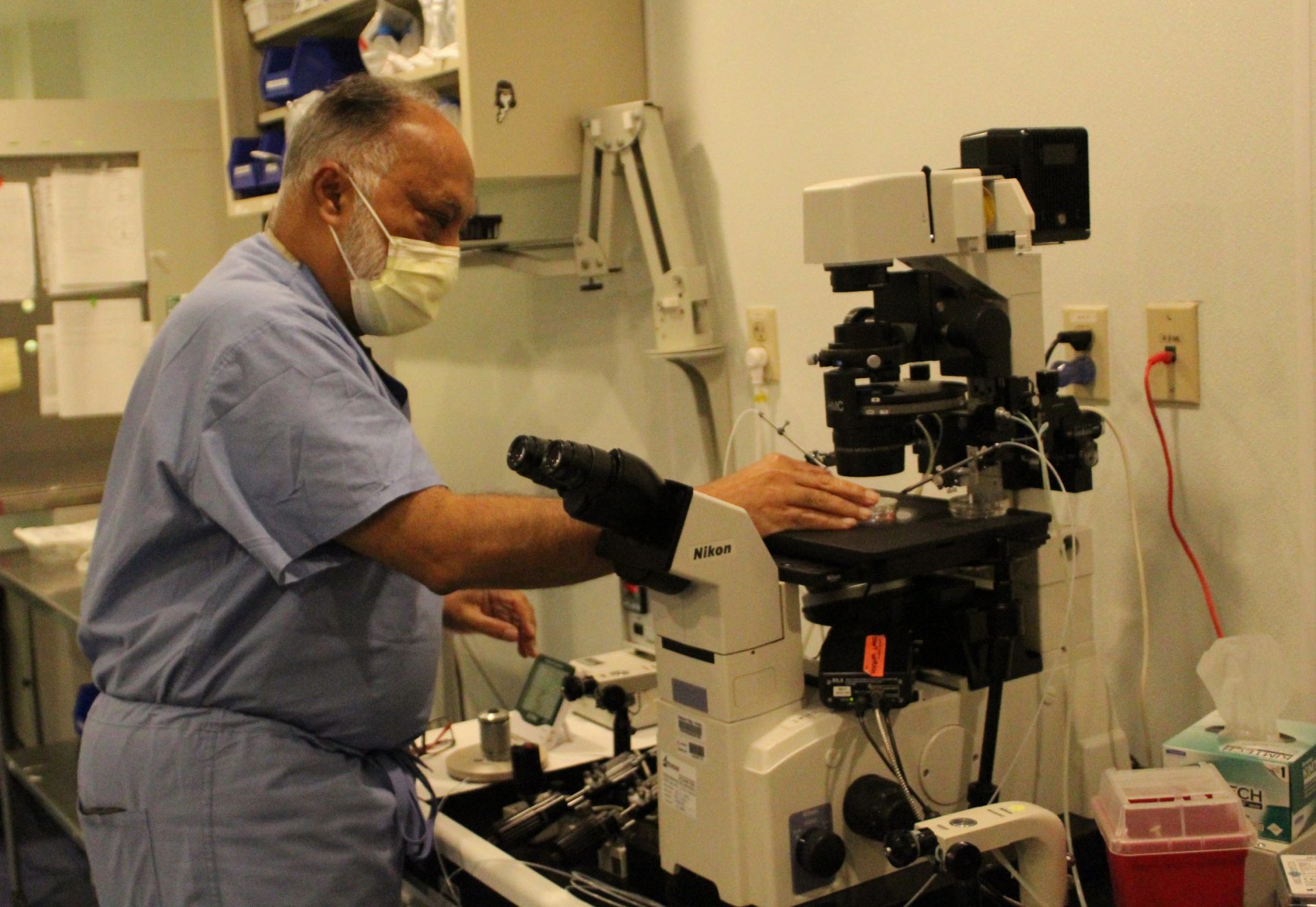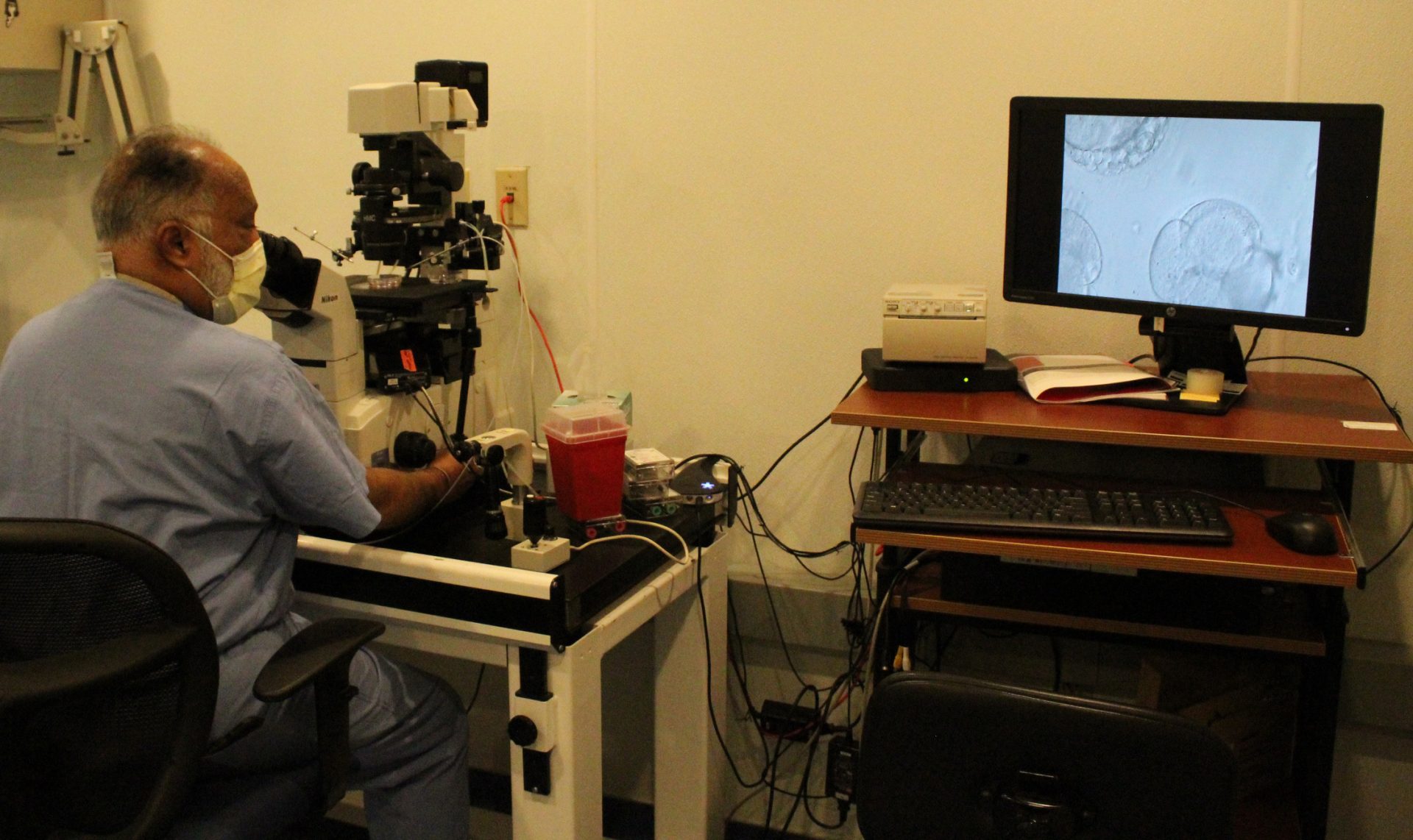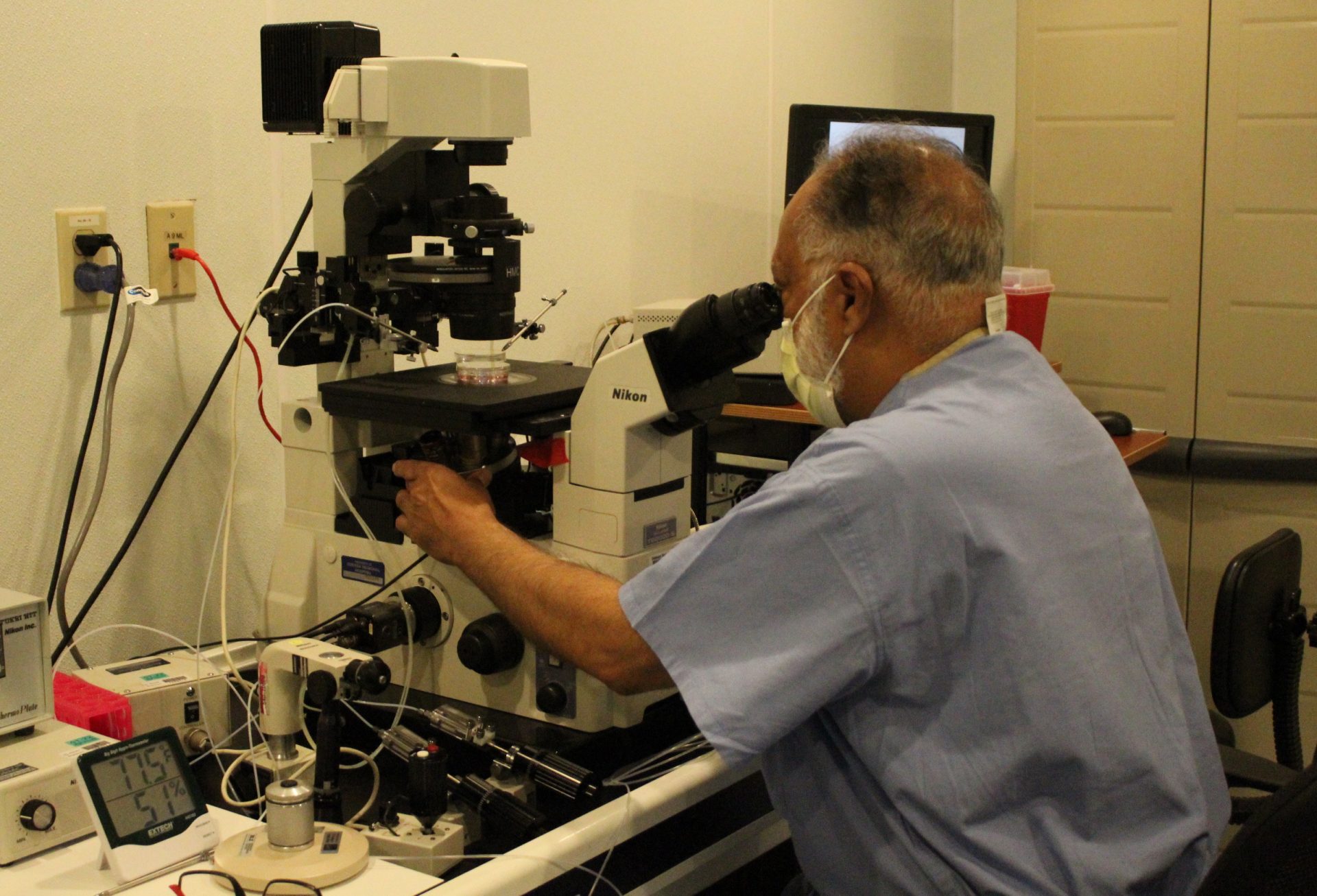Drs. Rizwan Malik, Brijinder Minhas, Natalia Schlabritz-Lutsevich and Odessa Regional Medical Center have joined forces to help infertile couples and individuals.
Minhas said there is a 17 percent infertility rate worldwide.
Malik said Odessa’s program is the most comprehensive of any in the world.
“I think that’s unique about our program and makes it very special that even though the community is small we have all the services available to our patients,” Malik said.
Betty Harrold, who oversees the lab and is the hospital’s business development director, said the lab originally opened in 2002 with Dr. Sandra Bellow. When she left Malik and Minhas arrived, followed by Schlabritz-Lutsevich.
Bello left in 2012 and the lab reopened in 2014, Harrold said.
Now that the program has been re-established people are coming from all over for treatment.
Malik said the main area is the whole Permian Basin, but they also get patients from out of state.
“If you come in for infertility, they’re going to do lab testing on you. They’re going to do semen analysis to see which side, or if it’s both. Then Dr. Malik’s going to determine if they need a surgical procedure. Maybe they’ve had a tubal and they want that reversed. There’s a lot of things that determine how to make IVF happen,” Harrold said.
Malik said they are one of the few programs in the area that do tubal reversals using robot assistance. Having that available is attractive.
“… That’s why a lot of people come in for those surgical services. It’s really a comprehensive treatment of fertility whether it’s through surgical means or IVF. … We do see a high prevalence of polycystic ovarian syndrome, endometriosis and fibroids,” Malik said.
“… We recently introduced a procedure called Acessa. We are the only hospital and program in a 400- to 500-mile radius” that offers this, he added.
According to its brochure, Acessa is a laparoscopic radiofrequency ablation designed to treat fibroids. It works by delivering heat (radiofrequency) directly into a fibroid to destroy the proteins of the fibroid tissue, the information says. The consistency of the fibroid changes from being hard like a baseball to soft like a marshmallow.
“I think as a program we are bringing cutting-edge technology to the Basin and that’s what makes it unique as a total program …,” Malik said.
Minhas said fertility starts declining at age 27. At 35, it drops further and then by 40 it becomes more difficult.
Couples may also wait longer to have children, or have difficulty conceiving for various reasons or a single woman may not have found the right person.
“But then there are newer technologies as well in terms of donor eggs,” Minhas said. “… What’s also become more common is you’ve got these egg banks where you have a dossier. You look at the characteristics … just like we used to have for sperm donors.”
Minhas said women also can freeze their eggs.
“… Age is really the determining factor. You can freeze your eggs at 30 years old. At 40, you may find someone that you like and want to get married to. You can just go into the freezer, just like ice cubes, get those eggs out, put the sperm in and you’ve got a baby,” Minhas said.
“Now I have had patients. I think the oldest one was 62 who had babies because if the uterus stays good, if you take young eggs and sperm and you put them together you can transfer them to any uterus you want as long as you support the uterus with hormones …,” he added.
Minhas said you can also hire a surrogate to carry a baby.
“Typically there are agencies that provide surrogates,” Minhas said.
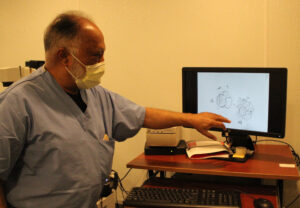
He added that family members become surrogates many times, or people can go through an agency.
Schlabritz-Lutsevich joined the team from Texas Tech University Health Sciences Center.
“She has really provided a depth to our practice that we feel is very valuable to us and to our patients that they come in and have somebody there that is as warm and as educated a gem of a person,” Malik said.
“… When you have infertility, it’s a very emotional journey,” Malik said. He added that Schlabritz-Lutsevich adds humanity to science.
Schlabritz-Lutsevich said she did her PhD in IVF. She added that she knows the entire IVF process, so she can relate to the patient and she knows the scientific background.
“I think that the entire basis of our existence as human beings is to be able to produce the next generation which is better than us …,” Schlabritz-Lutsevich said.
Harrold said Minhas is brought in from Chicago every couple of months to conduct the IVF process. Patients know about two weeks after the embryo transfer if they are pregnant.
“… We’re trying to get about 150 cycles a year as our goal,” Harrold said. “We’ve hit almost 100, but we would like to be at about 150 a year.”
Malik noted that with a smaller program it can be hard to get the best talent.
“What’s unique about our program (is) Dr. Minhas brings experience and his depth of knowledge and his technical expertise (which is) sometimes lacking in smaller communities. It’s hard to recruit that type of talent and that type of expertise …,” Malik added.

